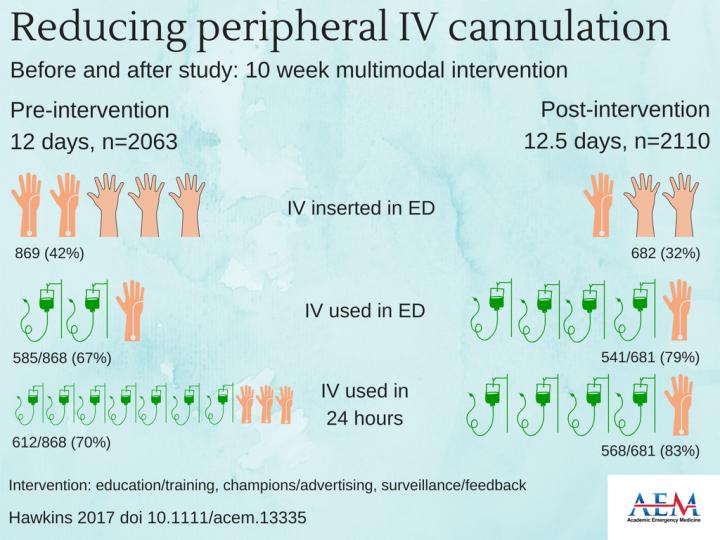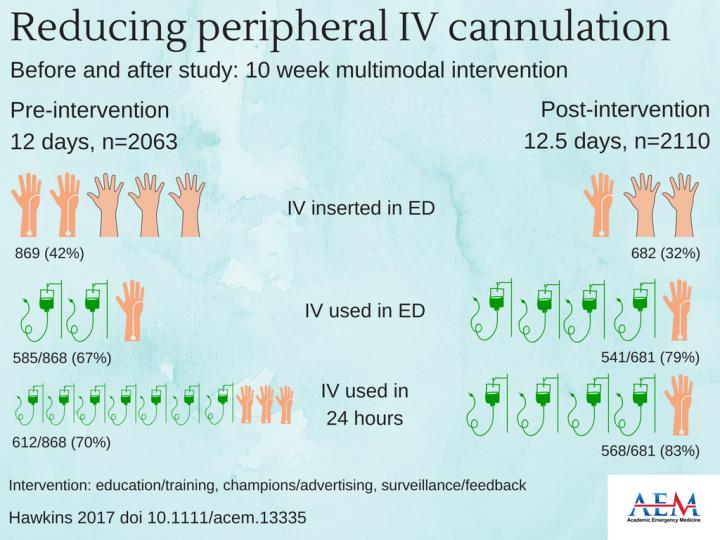
Credit: Kirsty Challen, BSc, MBChB, MRes, PhD, Lancashire Teaching Hospitals, United Kingdom.
DES PLAINES, IL–Peripheral intravenous cannula (PIVC) insertion in the emergency department can be reduced using a multimodal approach designed to support critical thinking and promote clinically appropriate peripheral intravenous cannula insertion and use. That is the primary finding of a study to be published in the January 2018 issue of Academic Emergency Medicine (AEM), a journal of the Society for Academic Emergency Medicine (SAEM).
The lead author of the study is Tracey Hawkins, Grad Cert (ENurse), in the Department of Emergency Medicine, Royal Brisbane and Women's Hospital, Brisbane, Queensland, Australia
The study, by Hawkins, et al, showed that multimodal intervention not only reduced PIVC placement in the ED, it also increased the percentage of PIVCs placed that were used. These findings suggest that this program benefits patients and health services alike, with potential for large cost savings. Ali Tann, BSN, RN, CEN a registered nurse in the emergency department at IU Health Methodist Hospital, Indianapolis, commented:
"Many PIVs are placed because we know that labs will be ordered, but may not be sure about fluids and/or meds and don't want to stick the patient too many times. Simply stated, the more sticks the unhappier the patient. But ultimately, in order for PIV campaigns to be successful, there needs to be more consensus among the providers. In other words, if the gut works, use it!"
###
The Society for Academic Emergency Medicine (SAEM) is a 501(c)(3) not-for-profit organization dedicated to the improvement of care of the acutely ill and injured patient by leading the advancement of academic emergency medicine through education and research, advocacy, and professional development. To learn more, visit saem.org.
Media Contact
Stacey Roseen
[email protected]
847-257-7227
@SAEMonline
http://saem.org





